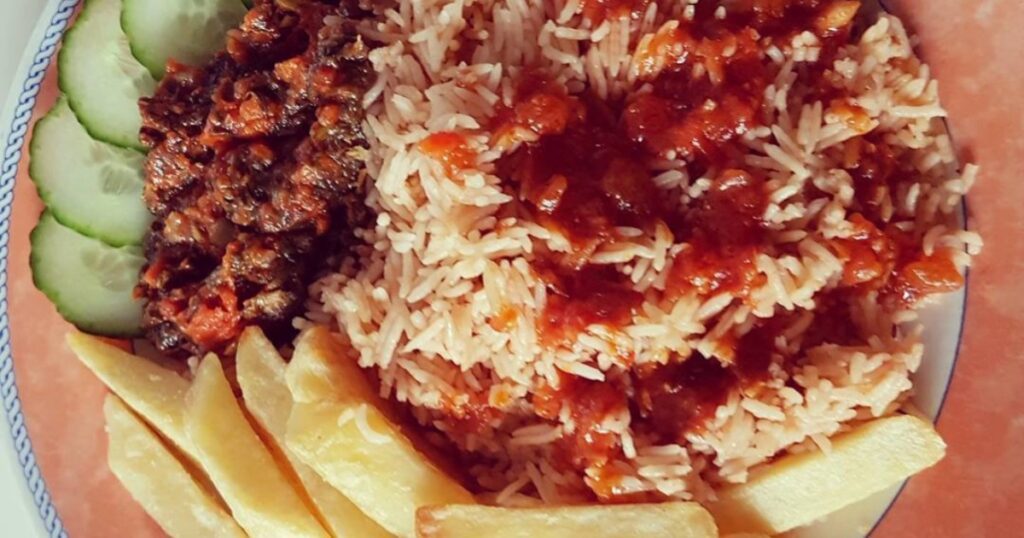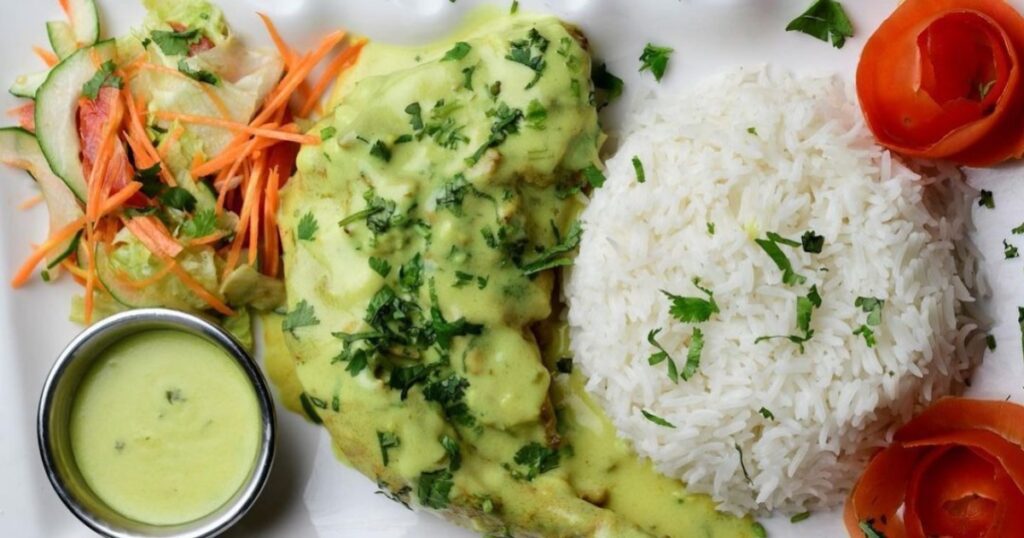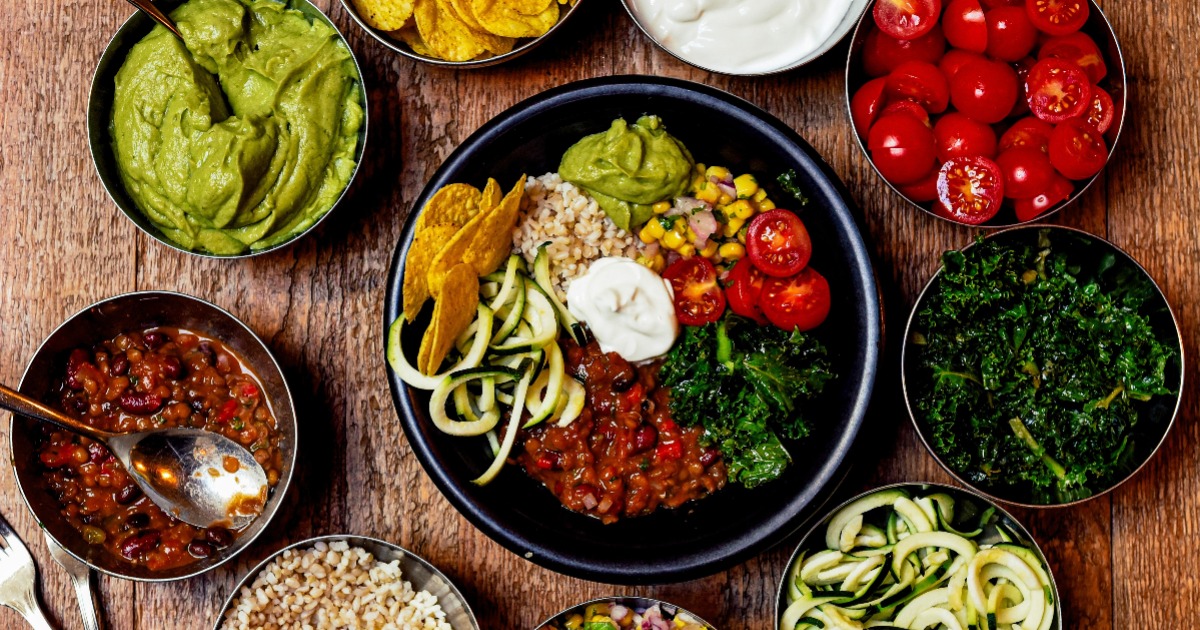Vegetarian food in Tanzania varies from a dish to another, each of which is unique and well worth tasting. Here are the top 10 to try when visiting Tanzania.
1: Ugali
Ugali, a dish prepared from cornmeal or maize flour, is widely consumed in Africa. It’s a healthy vegetarian option that doesn’t take long to prepare. Ugali is an excellent source of energy and fiber and goes well with many vegetarian options.
Ugali is a staple food in parts of Africa and is made by cooking a mixture of maize flour and water until it becomes sticky and doughy. It is churned constantly until it attains a homogeneous consistency. Vegetables, beans, and lentils are often paired with ugali to make it a hearty and healthy meal.
Ugali provides an abundance of carbs, protein, and fiber, all of which are necessary for a healthy vegetarian diet. It’s great for those trying to keep their blood sugar in check since it’s low in fat and has a low glycemic index. Constipation is avoided and digestive health is maintained by ugali’s high fiber content.
Ugali may be used in many different ways, which is one of its many strengths. Veggies like sukuma wiki (collard greens), spinach, and cabbage are great complements. Ugali is a staple food in the Swahili cuisine and pairs well with bean, lentil, or chickpea stews. Because of this, it’s an excellent option for vegetarians who wish to eat well without eating meat.
Ugali is a simple, inexpensive, and healthful staple that goes well with just about everything. Vegetarians searching for a satisfying and nutritious lunch will find this dish to be an excellent choice.
2: Mchicha

Vegetarians in Tanzania often eat mchicha, which is amaranth leaves or just greens. Because of its high vitamin, mineral, and antioxidant content, it is a very healthy and flexible vegetable. Because of its high nutritional value, mchicha is an excellent supplement to a vegetarian diet.
Mchicha is made by washing the leaves and then cooking them in a pot with a number of different spices and other ingredients. When paired with other vegetarian components like beans or lentils, it may be served as a main dish as well as an accompaniment.
Mchicha has a lot of iron, which is used to make red blood cells. The high calcium content is beneficial for bone and tooth health. Vitamins A, C, and K, found in abundance in the leaves, play important roles in maintaining good skin, immune system function, and blood coagulation.
Mchicha’s high fiber content also benefits health by easing digestion and keeping blood sugar stable. It’s a great option for those watching their calorie and fat intake, or who just want to eat healthier overall.
One cup of cooked mchicha leaves has around 3 grams of protein, making it a fantastic choice for vegetarians. It enhances the taste, texture, and nutritional value of vegetarian dishes in a variety of ways.
Mchicha may be used to supplement any vegetarian diet with a wide variety of nutrients and flavors. The high levels of iron, calcium, vitamins, and fiber in it make it a fantastic option for anybody trying to eat healthily.
3: Pilau
Rice, veggies, and a variety of spices make up the base of the traditional Tanzanian cuisine known as pilau. It’s loved by vegetarians since it’s healthy and delicious. Pilau is a wonderful illustration of the tasty and healthful potential of vegetarian cuisine.
Pilau starts with rice that has been boiled in a broth made from vegetables and other spices. Cumin, cardamom, cinnamon, and cloves are traditional spices used to give this meal its signature taste. After the rice is done, it is mixed with vegetables such onions, carrots, and peas and cooked until the vegetables are soft.
Pilau is rich in complex carbs, which provide you energy that lasts longer. It is rich in fiber and low in fat, making it an excellent meal for both weight control and satiety. Cumin, cinnamon, and cardamom are just a few of the spices used to make pilau, and they all have well-documented health advantages, including reduced inflammation and improved digestion.
Pilau’s adaptability is one of its many strengths. It may be a side dish on its own, or the main course when coupled with other vegetarian foods like lentils or chickpeas. Vegetarians who want a hearty and healthy lunch can consider this alternative.
Pilau is a delicious and healthy vegetarian dish that may be used in a variety of ways. Complex carbs, fiber, and spices all found in high concentrations make this an excellent food choice. Pilau is a wonderful illustration of the tasty and healthful potential of vegetarian cuisine.
4: Ndizi Kaanga

Fried plantains or bananas are the basis for the vegetarian staple Ndizi Kaanga in Tanzania. It’s a versatile recipe that may be used as a side dish or, when coupled with other vegetarian options, as a main course.
Ndizi kaanga is prepared by frying sliced ripe plantains or bananas in oil until they are golden brown. The dish’s signature taste comes from a blend of spices added to the fried plantains, including cumin, turmeric, and garlic.
Complex carbs, fiber, and potassium may all be found in abundance in ndizi kaanga. Plantains’ high potassium content contributes to their role in supporting cardiovascular health and normal blood pressure. Because of their high fiber content, they also assist in digestion and keep blood sugar levels stable.
The adaptability of ndizi kaanga is one of its many strengths. It may be a main course with a salad on the side, or a side to other vegetarian meals like lentils or chickpeas. Vegetarians who want a satisfying and healthy lunch in a short amount of time will like this dish.
Vegetarian ndizi kaanga has many applications and is both tasty and healthy. It’s versatile enough to be either a side dish or the main course, and it’s a fantastic source of complex carbs, fiber, and potassium. Ndizi kaanga is a wonderful illustration of the power of a few basic ingredients to make a satisfying and nourishing dish.
5: Maharage
Among Tanzania’s vegetarian options, maharage (kidney beans) ranks high in popularity. It may be used in many different ways and is quite healthy because to its abundance of protein, fiber, and many vitamins and minerals. In Tanzania, many communities rely on maharage as a staple meal, and it is used in a wide range of vegetarian cuisines.
In order to make maharage, the beans are first soaked in water overnight, and then cooked until they are soft. You may produce a tasty meal by adding spices and other items like onions, tomatoes, and garlic to the pot as you cook them.
The plant-based protein found in maharage is essential for the growth and maintenance of all of the body’s tissues. It also contains a lot of fiber, which makes it easier to digest and controls blood sugar levels. Vitamins and minerals necessary for optimum health, including the ones found in beans in abundance.
Among the many wonderful things about maharage is its adaptability. As a side dish, it goes well with rice or chapati, but it may also stand on its own as a main dish when mixed with other vegetarian components like vegetables or lentils. Vegetarians who are concerned about their health may benefit greatly from this dish.
In Tanzania, vegetarian cuisines often use maharage because of its great nutritional value and adaptability. Because of the high levels of protein, fiber, and other vitamins and minerals it contains, it is a fantastic food option for anyone trying to eat healthily. Delicious and nutritious plant-based dishes such as maharage are possible.
6: Kachumbari
Kachumbari, a famous Tanzanian vegetarian meal, is cooked with a variety of vegetables, including fresh tomatoes, onions, chili peppers, and even avocado and cucumber. Most restaurants use it as a condiment or side dish to complement their entrées, including grilled meats or stews.
Because of how easy it is to get the ingredients for kachumbari, it is a popular meal all throughout Tanzania. Tomatoes, onions, and chili peppers are commonly diced and mixed together in a bowl to make this meal. Cucumbers and avocados, in their chopped form, may be called for in several recipes.
Salt, black pepper, and lemon or lime juice are common ways to season kachumbari. Fresh herbs like cilantro or parsley may be used in certain preparations.
Kachumbari is an ideal hot-weather vegetarian meal since it is light and refreshing. It’s perfect for those watching their calorie intake and trying to include more nutritious plant-based foods into their diet because of its low glycemic index and high vitamin and mineral content.
7: Samosas

Vegetarian samosas have gained popularity all over the globe from its original home in the Indian subcontinent. These are pastry pockets, usually triangular or cone-shaped, stuffed with a delicious mixture of veggies, spices, and occasionally paneer (Indian cheese).
Mash potatoes, onions, peas, and spices including cumin, coriander, and turmeric are the classic vegetable stuffing for samosas. The filling may be made with a variety of vegetables, including carrots, cauliflower, and spinach.
Pastry dough is rolled out and cut into circles, then filled with the vegetable mixture and sealed into a triangle form to produce samosas. The samosas are then cooked in oil until they are brown and crispy.
Samosas are a common appetizer or snack, and they’re also a common street item in many nations. You may eat them alone or with a dipping sauce like chutney or yogurt.
Vegetarian samosas are delicious and may be found in many different types of restaurants and street vendors. They’re perfect for vegetarians and vegans looking for a full dinner or snack.
8: chapati
The East African country of Tanzania is known for its chapati, a sort of flatbread. Vegetarian meal that is often eaten with stews and curries and is prepared with wheat flour, water, and salt.
Chapati is made by kneading together a dough made of flour, water, and salt. When the dough has been formed out into rounds, they are fried on a griddle or frying pan at high heat until they are golden brown and somewhat crispy.
Chapati may be prepared in a variety of tasty ways. It’s great as a standalone snack or for sopping up stews and curries. The chapati’s taste may be enhanced by adding spices to the dough, such as cumin or coriander.
Across Tanzania, chapati, a simple and healthy vegetarian dish, is a staple in many homes. When consumed in moderation, it may be a nutritious supplement to a diet because of the carbs it contains.
9: Kuku wa kupaka

The East African country of Tanzania is known for its chapati, a sort of flatbread. Vegetarian meal that is often eaten with stews and curries and is prepared with wheat flour, water, and salt.
Chapati is made by kneading together a dough made of flour, water, and salt. When the dough has been formed out into rounds, they are fried on a griddle or frying pan at high heat until they are golden brown and somewhat crispy.
Chapati may be prepared in a variety of tasty ways. It’s great as a standalone snack or for sopping up stews and curries. The chapati’s taste may be enhanced by adding spices to the dough, such as cumin or coriander.
Across Tanzania, chapati, a simple and healthy vegetarian dish, is a staple in many homes. When consumed in moderation, it may be a nutritious supplement to a diet because of the carbs it contains.
10: Mbaazi
Mbaazi is a vegetarian dish that is commonly eaten in Tanzania, particularly in the coastal regions. It is made from pigeon peas that are cooked with coconut milk and a blend of spices to create a flavorful and creamy stew.
To make mbaazi, the pigeon peas are first soaked in water overnight to soften them. They are then boiled until they are tender and cooked through. In a separate pan, a sauce is made by cooking onions, garlic, ginger, and a blend of spices, including cumin, coriander, turmeric, and chili powder, in coconut oil until the onions are soft and translucent.
Coconut milk is then added to the pan, and the mixture is simmered until it thickens and the flavors meld together. The cooked pigeon peas are added to the sauce and gently stirred until they are coated in the creamy curry.
Mbaazi is typically served with rice or chapati, and it is sometimes garnished with fresh herbs such as cilantro or parsley. It is a delicious and comforting vegetarian dish that is popular in Tanzania and other parts of East Africa.
Pigeon peas, the main ingredient in mbaazi, are a good source of protein and fiber, making this dish a nutritious addition to a vegetarian diet. It is also a great way to experience the flavors of traditional Tanzanian cuisine.















